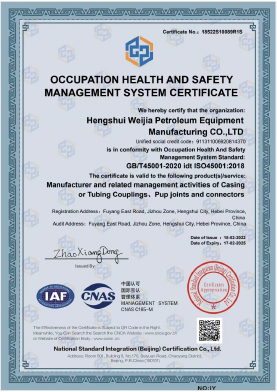- Afrikaans
- Albanian
- Amharic
- Arabic
- Armenian
- Azerbaijani
- Basque
- Belarusian
- Bengali
- Bosnian
- Bulgarian
- Catalan
- Cebuano
- Corsican
- Croatian
- Czech
- Danish
- Dutch
- English
- Esperanto
- Estonian
- Finnish
- French
- Frisian
- Galician
- Georgian
- German
- Greek
- Gujarati
- Haitian Creole
- hausa
- hawaiian
- Hebrew
- Hindi
- Miao
- Hungarian
- Icelandic
- igbo
- Indonesian
- irish
- Italian
- Japanese
- Javanese
- Kannada
- kazakh
- Khmer
- Rwandese
- Korean
- Kurdish
- Kyrgyz
- Lao
- Latin
- Latvian
- Lithuanian
- Luxembourgish
- Macedonian
- Malgashi
- Malay
- Malayalam
- Maltese
- Maori
- Marathi
- Mongolian
- Myanmar
- Nepali
- Norwegian
- Norwegian
- Occitan
- Pashto
- Persian
- Polish
- Portuguese
- Punjabi
- Romanian
- Russian
- Samoan
- Scottish Gaelic
- Serbian
- Sesotho
- Shona
- Sindhi
- Sinhala
- Slovak
- Slovenian
- Somali
- Spanish
- Sundanese
- Swahili
- Swedish
- Tagalog
- Tajik
- Tamil
- Tatar
- Telugu
- Thai
- Turkish
- Turkmen
- Ukrainian
- Urdu
- Uighur
- Uzbek
- Vietnamese
- Welsh
- Bantu
- Yiddish
- Yoruba
- Zulu
api casing sizes
Understanding API Casing Sizes A Comprehensive Overview
When it comes to the oil and gas industry, one of the most crucial elements in drilling and production operations is the casing. The American Petroleum Institute (API) lays down stringent specifications and standards for casing sizes, ensuring safety, efficiency, and compatibility. This article aims to delve into the intricacies of API casing sizes, exploring their significance, classifications, and applications in the field.
What is Casing?
Casing refers to the series of pipes that are installed in the wellbore to stabilize the well and protect it from contamination. Casing is essential in preventing the collapse of the wellbore, as well as isolating different geological formations. It serves not only to protect the wellbore from external pressures but also to facilitate the production of oil and gas.
API Casing Sizes
The API standardizes casing sizes to ensure uniformity across the industry. Casing is classified by its outer diameter and wall thickness. The most commonly used casing sizes include 4.5-inch, 5-inch, 7-inch, 9.625-inch, 10.75-inch, and 13.375-inch diameters, with variations in wall thickness tailored to the environmental conditions and production requirements.
Casing sizes are typically indicated by two numbers the first number represents the nominal pipe size, which is determined by the outer diameter, while the second number represents the weight per unit length, measured in pounds per foot (lb/ft). For instance, a casing with a designation of 9.625-inch 40 lb/ft indicates a casing with a nominal diameter of 9.625 inches and a weight of 40 pounds per foot.
Types of Casing
API designates various types of casing to meet specific drilling requirements
1. Surface Casing The first casing string installed to protect freshwater aquifers and provide stability to the wellbore. It is typically driven to a depth where the pressure is manageable and then cemented in place.
api casing sizes

2. Intermediate Casing Installed after the surface casing, this type of casing serves to isolate any potential hydrocarbons and protect the well from shifting geological structures. The intermediate casing is vital in deeper wells.
3. Production Casing The final casing that allows for the extraction of oil or gas. Once the well reaches its target, the production casing is placed to facilitate the flow of hydrocarbons to the surface.
4. Liner A type of casing that does not extend to the surface but is instead hung within another casing string. Liners are utilized in specific situations, such as in overburdened formations.
Importance of API Standards
API standards ensure that casing is manufactured to specific guidelines regarding material strength, wall thickness, and corrosion resistance. This uniformity is crucial for safety, as inadequate or poorly manufactured casing can lead to catastrophic failures, including leaks, blowouts, or well collapses.
Moreover, API casing standards also support efficiency in operations. With standardized sizes and weights, operators can streamline their inventory and equipment for drilling and production, reducing downtime and improving cost-effectiveness. Additionally, API specifications promote interoperability among different manufacturers, enabling operators to work with various suppliers without concerns about compatibility.
Environmental and Safety Considerations
The stringent specifications outlined by the API not only facilitate efficient drilling and production but also address safety and environmental concerns. Proper casing installation and maintenance help to prevent leaks that could contaminate groundwater or lead to surface spills. Furthermore, adhering to API standards reduces the risks associated with pressure build-up and potential blowouts, thereby protecting the workforce and the surrounding community.
Conclusion
API casing sizes play a pivotal role in the oil and gas industry, providing essential support for safe and efficient drilling operations. Understanding the classifications, types, and standards associated with casing sizes is crucial for industry professionals looking to optimize their operations while adhering to safety protocols. The continued evolution of API standards is key to enhancing operational efficiency and environmental stewardship in an ever-demanding industry landscape. As the energy sector moves toward more sustainable practices, the importance of robust API casing standards will only grow, ensuring the integrity and safety of drilling operations for years to come.
-
Tubing Pup Joints: Essential Components for Oil and Gas OperationsNewsJul.10,2025
-
Pup Joints: Essential Components for Reliable Drilling OperationsNewsJul.10,2025
-
Pipe Couplings: Connecting Your World EfficientlyNewsJul.10,2025
-
Mastering Oilfield Operations with Quality Tubing and CasingNewsJul.10,2025
-
High-Quality Casing Couplings for Every NeedNewsJul.10,2025
-
Boost Your Drilling Efficiency with Premium Crossover Tools & Seating NipplesNewsJul.10,2025







